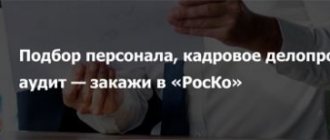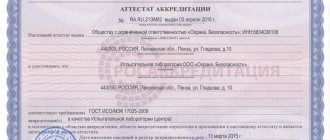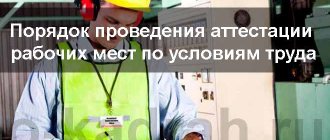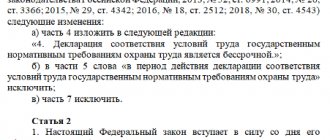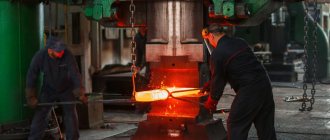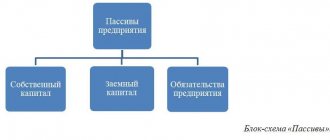The general procedure for performing special assessment work is regulated by the regulations. However, in practice, the order of its implementation, the sequence of stages and other features can raise many questions for enterprises that need to carry out SOUT. Our step-by-step instructions for SOUT will help you understand this problem.
- Stage 1: preparation for work according to step-by-step instructions for SOUT
- Stage 2: choosing an artist
The general procedure for performing special assessment work is regulated by the provisions of 426-FZ. However, in practice, the order of its implementation, the sequence of stages and other features can raise many questions for enterprises that need to carry out SOUT. Our step-by-step instructions for special assessments will help you understand this problem.
Methodology SOUT 33n with modifications
Order 33n regulates the SOUT procedure. By 2021, the methodology for conducting a special assessment of working conditions has undergone some changes:
- The principles on the basis of which the influence of biofactors on determining working conditions were studied have changed.
- Groups III and IV of biologically hazardous pathogens have appeared.
- Opportunistic pathogens were isolated from the general group of pathogens.
- For workers who work underground, harmful factors associated with artificial lighting have been identified.
The frequency of special assessments of working conditions remains unchanged and is five years.
Definition of classes of working conditions
Then all workplaces where the tests were carried out must be assigned to a certain class (subclass) of working conditions.
Chapter IV of the Methodology determines the procedure for calculations for chemical, biological, factors, under the influence of fibrogenic aerosols, vibroacoustic factors, microclimate parameters, negative effects of the light environment, ionizing and non-ionizing radiation, etc.
In 2021, paragraph 29 of the Methodology on the impact of biological factors was revised: the criteria for classifying the effects of biological factors as hazardous working conditions were expanded, new groups of “three” and “four” pathogens of biologically harmful factors were introduced, and opportunistic pathogenic microorganisms were separated into a separate group.
When classifying working conditions as a class, the severity of the labor process is assessed: dynamic, static loads, the severity of manually moved loads, body tilts, etc. are taken into account. When assessing the intensity of the work process, the expert pays attention to the density of signals, messages, the number of light signals, the load on the speech apparatus, and the monotony of the workload on the employee.
If there is a complex impact of harmful factors, then, according to paragraphs 92-93 of the Methodology, it is assessed which class the factors belong to, and as a result, the highest harmful class (subclass) is established.
Sequence of the assessment procedure
The methodology for carrying out special audit procedures provides for special regulations containing certain stages of the audit:
- Involvement of an appraiser - an accredited organization that has received the appropriate license. Ecostar is exactly such an organization.
- Preparation of a package of documents, a list of workplaces for carrying out SOUT, which will be assessed. Information is collected on occupational diseases and the presence of emergency situations.
- Study and analysis of negative production factors. A list and measures for neutralization are being prepared.
- Drawing up a report with the results.
- Familiarization with the results of responsible persons and employees.
- Drawing up a declaration for regulatory authorities.
The inspection must be initiated by the employer. Responsibility for refusing the procedure falls squarely on him.
A special agreement is concluded with the expert organization. The enterprise issues an order to conduct a workplace audit, which must list the employees included in the assessment commission. In addition, this provision lists the jobs subject to special assessment.
Research and measurements
Often, the organization conducting the special environmental assessment includes a laboratory, which carries out research and measurements of harmful and (or) dangerous factors. Organizations determine their own research methods, but they must be approved and certified. This is necessary to maintain uniformity of measurements. All examinations and measurements are conducted during the employee's normal activities, taking into account the employee's use of his equipment. Measurements must be carried out for all workplaces where harmful and/or dangerous factors have been identified. But if these places are completely similar, then measurements are needed only for 20% of such workplaces (minimum 2 workplaces), and the results will be valid for the entire group.
After testing for each of the identified factors, a protocol is drawn up. The information to be entered into the protocol is indicated in paragraph III. 16 Methods.
Frequency of SOUT
Methodological recommendations for a special assessment of working conditions indicate that inspections can be carried out both periodically and unscheduled.
The standard audit period is every five years. In this case, previously inspected workplaces are assessed. Moreover, if during the specified time there were no cases of occupational diseases or injuries, then the declaration can be extended automatically for the same period, without requiring the entire procedure.
There must be certain reasons for an unscheduled assessment:
- formation of a new workplace;
- changes in the production process of the enterprise, due to which the level of exposure to negative factors may change;
- order from the labor inspectorate;
- change of personal protective equipment;
- injuries or emergencies that occurred at the workplace, etc.
An organization in such a situation is obliged to conduct an audit within 6-12 months. An order for a special assessment of working conditions must be issued, and other necessary measures are taken.
SOUT results
The results are documented by the organization that conducted the special assessment in the form of a report. It must be signed by all members of the commission, and it is approved by its chairman. Any member of the commission has the right to disagree with the results of the SOUT and can express his opinion in writing. It will be attached to the report. The report form and instructions are determined by Order 33n. The SOUT card is issued for all workplaces where the assessment took place. Then the employer informs the organization that conducted the assessment about approval or non-approval of the report.
In the report on the implementation of the SOUT, the organization's experts include recommendations for improving working conditions in the workplace. These recommendations are mandatory for the employer. If no harmful and (or) dangerous factors were found at the workplace, then for classes 1 and 2 (according to changes made in 2021), the employer submits a declaration of compliance of working conditions with state requirements. If a workplace has been declared and an accident occurs there, or an employee is diagnosed with an occupational disease, or a violation of labor safety standards is recorded, the declaration is terminated.
After completion of the assessment, the employer is obliged to familiarize employees with the results of the assessment. The report is valid for 5 years from the date of its signing, but in some cases an unscheduled special assessment is required. Violation of the procedure for conducting SOUT entails administrative liability.
Penalty for lack of SOUT
An employer who ignores the need to conduct a workplace audit will face penalties. The amounts are significant for them - from 60 to 80 thousand rubles for each workplace, if we are talking about a legal entity.
Repeated violation will entail an increase in the fine to 100-200 thousand rubles. It is also possible to suspend business activities for three months.
Do you have any questions? To get detailed advice on SOUT, leave an online application or call!
FEATURES OF CARRYING OUT A SPECIAL ASSESSMENT OF WORKING CONDITIONS
13. Decree of the Government of the Russian Federation dated April 14, 2014 No. 290 (as amended on April 25, 2015, December 14, 2016) “On approval of the list of jobs in organizations carrying out certain types of activities in respect of which a special assessment of working conditions is carried out taking into account those established by the authorized federal executive authority features". The document is not registered with the Ministry of Justice
14. Order of the Ministry of Labor of Russia dated November 14, 2014 No. 882n “On approval of the specifics of conducting a special assessment of working conditions at the workplaces of workers, the list of professions and positions of which was approved by Decree of the Government of the Russian Federation dated April 28, 2007 No. 252” (workplaces of creative workers mass media, cinematography organizations, television and video crews, theaters, theatrical and concert organizations, circuses and other persons involved in the creation and (or) performance (exhibition) of works)
15. Order of the Ministry of Labor of Russia dated May 18, 2015 No. 301n “On approval of the specifics of conducting a special assessment of working conditions at the workplace of crew members of sea vessels, inland navigation vessels and fishing vessels”
16. Order of the Ministry of Labor of Russia dated December 9, 2014 No. 996n “On establishing the specifics of conducting a special assessment of working conditions at the workplaces of workers engaged in underground work”
17. Order of the Ministry of Labor of Russia dated January 27, 2015 No. 46n (as amended on September 22, 2016) “On establishing the specifics of conducting a special assessment of working conditions in the workplace of workers in radiation hazardous and nuclear hazardous industries and facilities engaged in work with man-made sources of ionizing radiation”
18. Order of the Ministry of Labor of Russia dated February 18, 2015 No. 96n “On approval of the specifics of conducting a special assessment of working conditions at the workplaces of divers, as well as workers directly carrying out caisson work”
19. Order of the Ministry of Labor of Russia dated February 19, 2015 No. 102n “On approval of the specifics of conducting a special assessment of working conditions in workplaces where workers are expected to be exposed to high pressure gas and air environments”
20. Order of the Ministry of Labor of Russia dated April 24, 2015 No. 250n “On establishing the specifics of conducting a special assessment of working conditions at the workplace of medical workers”
21. Order of the Ministry of Labor of Russia dated 01.06.2015 No. 335n “On establishing the specifics of conducting a special assessment of working conditions in the workplaces of workers whose labor function is to prepare for sports competitions and participate in sports competitions in a certain type or types of sports”
Preparing of report
Based on the results of previously implemented procedures, the organization conducting the special assessment must draw up a report in accordance with Art. 15 of Law No. 426-FZ.
The report includes:
- Declaration of conformity with state regulatory requirements for labor protection (if any)
- Expert's opinion on the possibility of using the results of production control when conducting a special assessment of working conditions (if any)
- Report title page
- Expert opinion on identification results
- Information about the organization conducting SOUT (Section 1)
- List of RMs where a special assessment was carried out (Section 2)
- Research (test) and measurement protocols (if available)
- SOUT maps (Section 3)
- Protocols for assessing the effectiveness of personal protective equipment used by employees (if available)
- Summary statement of SOUT results
- List of measures to improve working conditions (Section 6)
- Protocol on the impossibility of conducting research (tests) and measurements (if available)
- Identification expert's opinion
- Reasoned dissenting opinion (if available)
- Comments and objections from employees (if any)
The changes made to the composition of the report are related to the “expansion” of the rights and responsibilities of employees. And also, they take into account the possibility of the commission’s disagreement with the results of a special assessment of working conditions. This strengthens the role of employees and commission members in conducting a special assessment, giving them the right to express their position regarding the results of the conducted special assessment.
Please note that the report must indicate a unique identification number that was previously obtained by the expert organization. However, at the moment there is no indication in which specific part of the report this should be done. Most likely, this issue will be resolved only after changes are made to the Methodology for the Special Assessment of Working Conditions.
The most “controversial” change was the one that affected the individual workplace number, which, during an unscheduled and/or repeated special assessment of working conditions, must completely coincide with the originally specified number for a given place. The problem is that there is no specificity - who is responsible for fulfilling this requirement? In addition, there is a risk of duplicating the numbering of workplaces when carrying out SOUT in stages or under different agreements (contracts).
Let me remind you that this requirement is reflected in Art. 18 of Law No. 426-FZ, which relates to the transfer of information to the FSIS by an expert organization. It is not always the case that the expert organization is provided with correct data on the previously carried out special assessment work and especially on the numbering of workplaces. Therefore, to minimize risks (in terms of bringing the employer to administrative liability under Article 5.27.1 of the Code of Administrative Offences), there is only one option - to leave the previous numbering of workplaces even if there are duplicates in the enterprise. This is permissible due to the absence of restrictions in Law No. 426-FZ regarding the coincidence of numbers of different workplaces of the enterprise.
As for bringing an expert organization to administrative liability under Art. 14.54 of the Code of Administrative Offenses - it is worth more carefully analyzing the initial data provided by the employer and providing feedback if any questions arise, including regarding the numbering of jobs.
Identification of potentially harmful and/or dangerous factors
Identification is the process of comparing the factors available in the workplace with the factors provided by the classifier. This procedure is carried out jointly with the employer and the SOUT expert.
In accordance with part 3 of Art. 10 of Law No. 426-FZ, when carrying out identification, the following must be taken into account:
- Equipment, materials and raw materials used by the employee and which may be a source of VOPF
- Previous research results
- Accidents, occupational diseases associated with exposure to VOPF employees
- Suggestions from the workers themselves
Now, the results of industrial and federal state sanitary and epidemiological surveillance must be additionally taken into account. This innovation allows you to more competently assess all the factors affecting the employee and not miss anything when identifying an expert.
Organization conducting SOUT
The expert organization did not go unnoticed either. Now, in accordance with the amendments to Art. 19 of Law No. 426-FZ, it is obliged to transmit information to the federal executive body within 10 working days in the following cases:
- reduction in the prescribed manner of the scope of accreditation of the testing laboratory (center) indicating the harmful and/or dangerous factors of the working environment and labor process excluded from the scope of accreditation, provided for in Art. 13 of Law No. 426-FZ
- changes in the composition of the organization's experts
The expert organization can transmit this information in two ways: on paper by registered mail with return receipt requested, or in the form of an electronic document signed with an enhanced qualified electronic signature, with copies of supporting documents attached.
The Ministry of Labor reviews the received information within twenty working days from the date of its registration and makes a decision. Previously, we have already described the new requirements for the use of techniques (methods), as well as measuring instruments. Please note that in case of non-compliance with them, the activities of the organization conducting the SOUT are suspended. And only after eliminating the inconsistencies and submitting copies of documents confirming this fact to the Ministry of Labor, the activities of the expert organization can be restored.


